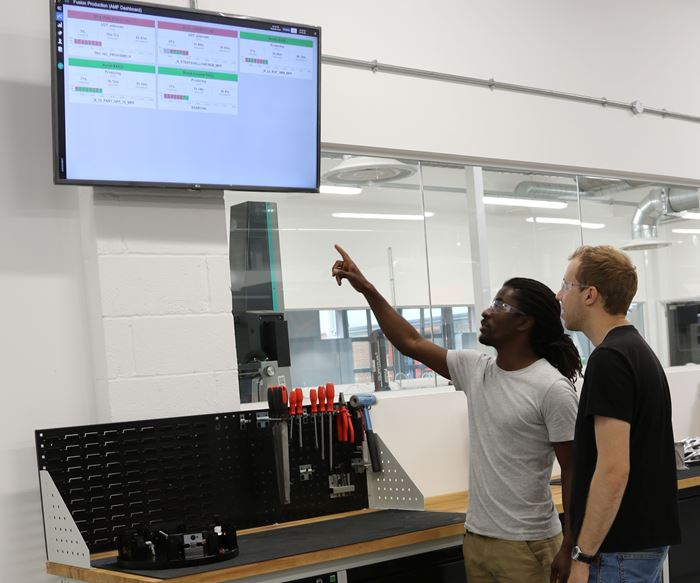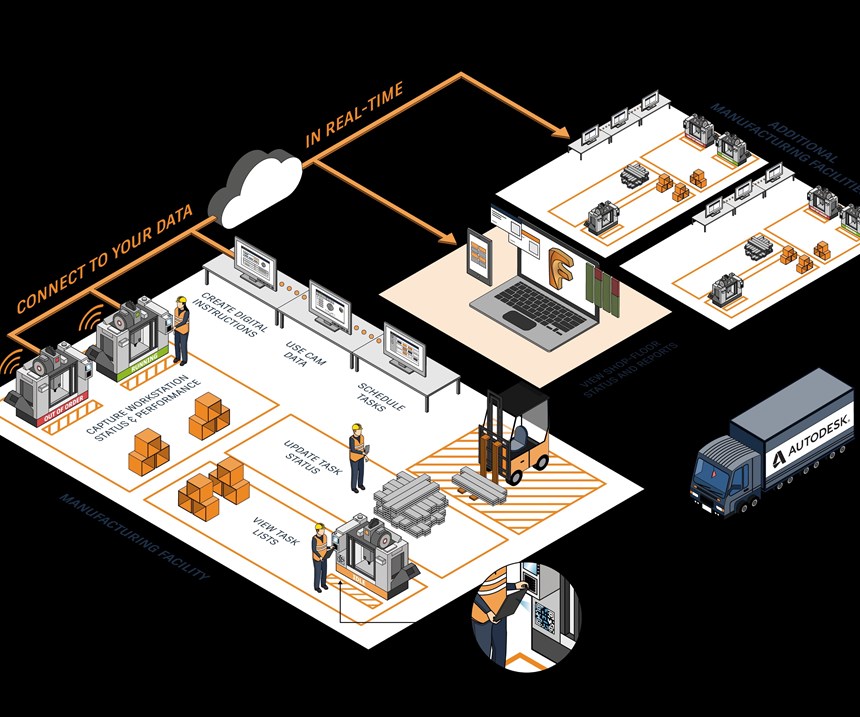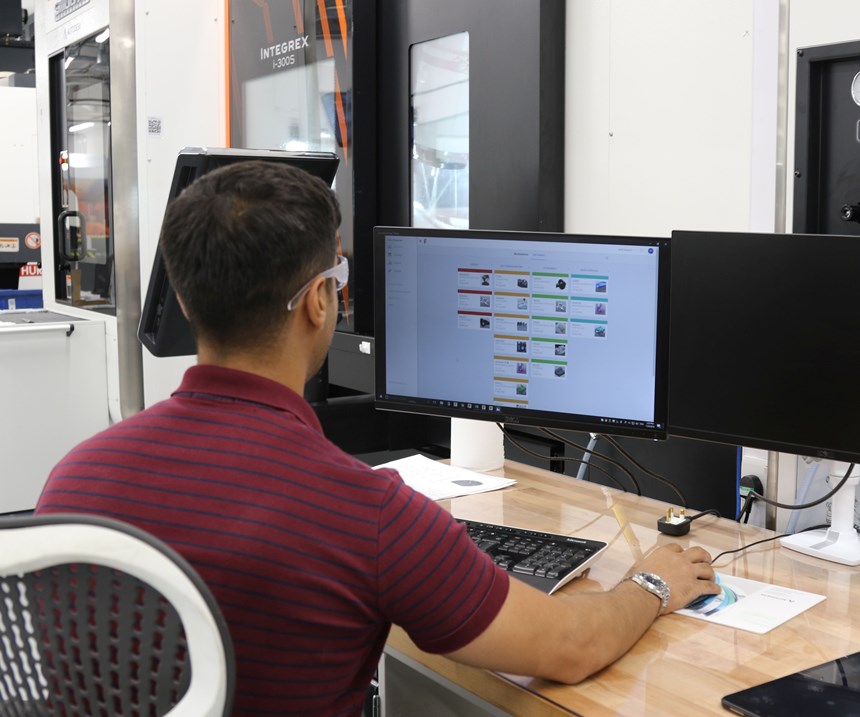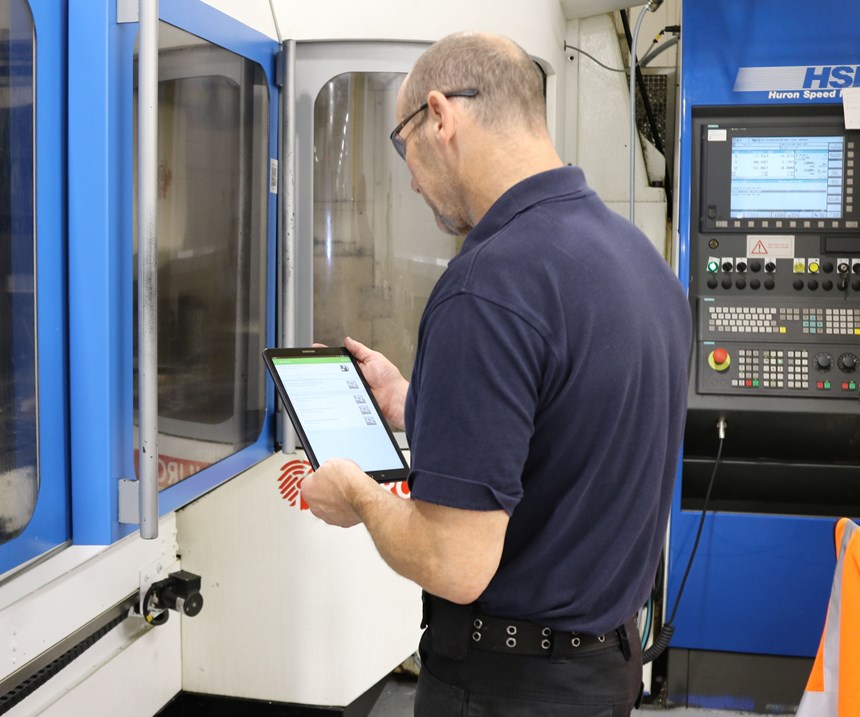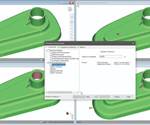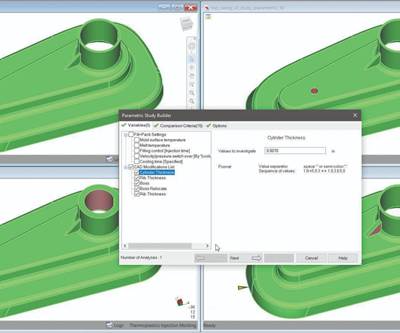Smart manufacturing, also known as Industry 4.0, refers to a wide range of practices that use advanced technologies in a variety of combinations, from robotics and automation to additive manufacturing and cloud computing to big data and analytics.
For mold builders, some of these practices are commonplace, while others have yet to be adopted. However, one approach that virtually all mold manufacturers can benefit from is using real-time production data to make informed decisions and to improve performance.
In theory, this means gaining a unified view of every job across production, which makes it much easier to plan work, adapt to changes and find ways to run the shop floor more efficiently.
In the context of smart manufacturing, it is more appropriate to imagine smart manufacturing’s potential impact on the everyday challenges of producing high-quality molds on time and on a budget, rather than a far-away future state that may or may not be feasible for your shop to achieve.
Assessing the Everyday Challenges
Every shop is familiar with the difficulty of managing the following processes throughout each work day.
Scheduling. Planning and tracking jobs through production can be a challenge because it often involves multiple businesses working on different phases of a mold at different times or in different time zones. In other cases, shops rely on time-consuming, manual processes, such as custom spreadsheets or the more traditional paper-and-pencil method. These elements make it difficult for you to see what is happening at any given moment with any given job.
When you cannot see what jobs are in the process, it becomes that much more difficult for you to predict workloads relative to available capacity. Mismatches can lead to poor scheduling, lower throughput and missed opportunities. Many shops work around this by having someone run from machine to machine checking job status, but that is inefficient and imprecise.
Managing changes. In the real world, manufacturing is rarely a smooth and uninterrupted process that always moves forward as planned. Customers change their orders. Suppliers miss deadlines. Parties do no communicate critical information. Data is inaccurate. CNC machines and tools break. You must deal with these variables quickly, or a waterfall of consequences can turn a small issue into a delay that compromises your shop’s profitability or even your reputation.
Improving performance. Reliable data is the foundation of process improvement. Today, it is a constant struggle to find the data that you need on things like downtime durations for machines, cycle times and quality issues. Paper files cannot share information, and many manufacturing software applications are not capable of communicating with each another. Disjointed methods can limit the ability of mold builders to extract and analyze data from multiple concurrent processes. Generating reliable data requires substantial manual data entry. Analyzing that data is even more time-consuming.
Applying a “Smart” Approach
The goal of smart manufacturing is to retrieve critical metrics continuously and move them to a central location that is easy for all to access. Ideally, smart manufacturing enables you to identify improvement opportunities more easily, make sure operators are using each machine to its full capacity and even understand which kinds of jobs are the most profitable. Excelling in any one of these areas could give your shop an edge. Improving all three would almost certainly set your shop apart from key competitors.
Cue a single, cloud-based tool for production scheduling, job tracking and CNC machine monitoring. All three of the aforementioned challenges are the result of not knowing something about a process when it would be extremely convenient to know it. A single, cloud-based tool for production scheduling, job tracking and CNC machine monitoring offers a way to solve this problem. It connects machine- and application-level data that you can access through a mobile app or web browser. You can see the value of this approach across the entire shop floor.
Start by eliminating manual processes. This single, cloud-based tool can create digital work instructions, dispatch job sheets, schedule tasks, track jobs, monitor workstations and view performance reports. Once you have created your instructions and dispatched the job sheets to the shop floor, you can track them through production.
With the ability to monitor the status of both job sheets and workstations, you can see at-a-glance which machines are operating, idle or offline and then assign (or reassign) jobs accordingly to optimize utilization, reduce downtime and improve throughput. This makes it easier to spot-check a job’s progress against the deadline, especially if the customer changes that deadline midstream.
And, you can capture a “snapshot” of these details to give customers or vendors a progress report at any time. This gives a centralized view of real-time information from the shop floor.
Knowing where everything is at any moment in time has a huge impact on mold manufacturers.
Digital scheduling would help you better manage capacity and make decisions that are based on actual workloads instead of estimates or guesswork. Digital work instructions could reduce the risk of mistakes. And, unplanned downtime at any workstation would be evident, which would enable you to address potential issues more rapidly and reroute other work before bottlenecks occur.
After a job runs, data about how it moved through production provides insight to which job instructions, job sheets and workstations produced the highest-quality mold tools. This kind of analysis could be vital to identifying the source of scrap, rework or other issues. More realistic time-to-market calculations could also improve the accuracy of quotes for similar jobs.
It’s also important to automatically generate a detailed product history that facilitates traceability as well as useful information on how your shop manufactured a mold. This could help your shop meet record-keeping requirements. Plus, capturing institutional knowledge about how to make specific parts can be useful if you need to program a similar job in the future.
Making Multiple Decisions
The realities of discrete manufacturing mean that each day involves multiple decisions. When unplanned machine downtime disrupts production, you ask yourself, Will it be more efficient to move the job or wait for a repair? How long will that repair take? If the repair is successful, how many more jobs can the shop take on today? This week? Typically, you must deal with these situations on the fly, choosing a course of action without the benefit of complete, accurate data from the workstations in question.
It is not just in-progress data that is important, but also the data that lets you understand how your shop floor is performing and that helps incremental process improvement. For example, with a single, cloud-based tool for production scheduling, job tracking and CNC machine monitoring, CAM programmers can gain insight into how CNC machines are actually performing, cross-referencing feeds and speeds to validate machining time, tracking setup times against part programs and seeing how utilization rates are affected by various parameters within an NC program. This information helps identify issues and leads to better tool paths and subsequent NC programs.
Maintenance engineers can view reports of CNC faults or warnings that pop up across machines. From this data, they could understand the need to schedule a machine for maintenance if a warning repeatedly arises. The production schedulers can begin to iteratively optimize their estimated schedules based on data that shows how long jobs take to complete or how long a particular NC program takes to run. This means their future schedules will be a better representation of what is happening on the shop floor.
There is potential to deliver a great deal of value to your shop by unifying your production and creating closed-loop feedback, all in parallel with the benefits of cloud computing. The benefits add up to a measurable competitive advantage, including:
- Higher speed: Fewer or faster rework loops let your shop ship more parts faster. In many situations, speed is a higher priority than cost.
- Higher efficiency: Together, better utilization of machines and better optimization of production schedules enables your shop to achieve higher throughput with less effort.
- Higher quality: Knowing the details of scrap rates creates opportunities for your shop to resolve problems earlier and apply successes broadly to increase the overall yield of quality.
- Higher profitability: Less scrap reduces costs, while improved efficiency and throughput help your shop manage higher workloads and serve more customers.
The value of connecting your manufacturing data collection and integration of various software tools cannot be understated. Even if your approach is limited in scope, the more data you collect now, the more opportunities your shop will have to realize improvements that increase your margins.
The value of connecting your manufacturing data collection and integration of various software tools cannot be understated. The more data that you collect now, the more opportunities your shop will have to realize improvements that increase your margins, even if your approach is limited in scope.
About the Contributor
Sanjay Thakore is a product marketing manager for Autodesk.
Related Content
How to Use Scientific Maintenance for More Accurate Mold and Part Troubleshooting
Discover how adopting scientific maintenance approaches helps improve mold lifespan, minimize failures, and optimize production outcomes.
Read MoreMMT Chats: Solving Schedule and Capacity Challenges With ERP
For this MMT Chat, my guests hail from Omega Tool of Menomonee Falls, Wisconsin, who share their journey with using enterprise resource planning (ERP)—and their people—to solve their schedule and capacity load monitoring challenges.
Read MoreHow to Automate Process and Design
Moldmakers can improve their operations and stop wasting time by taking these six steps for process and design automation.
Read MoreTake Time to Save Time: 6 Steps in Mold Design to Reduce Back-End Troubleshooting
Westminster Tool shares how the one week it typically takes to perform these six steps in the design phase can save three weeks or more in an overall tool build.
Read MoreRead Next
DOE Analysis and Geometry Optimization Drive Better Tooling Decisions
Flow simulation analysis helps optimize mold design and drive better tooling decisions.
Read MoreAre You a Moldmaker Considering 3D Printing? Consider the 3D Printing Workshop at NPE2024
Presentations will cover 3D printing for mold tooling, material innovation, product development, bridge production and full-scale, high-volume additive manufacturing.
Read MoreReasons to Use Fiber Lasers for Mold Cleaning
Fiber lasers offer a simplicity, speed, control and portability, minimizing mold cleaning risks.
Read More

